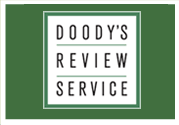|
|
|

|

|
The Lone Librarian
Patricia G. Duffel, RPh, MLIS
Department of Ophthalmology & Visual Sciences
University of Iowa
|
|
Like many librarians today, solo medical librarians have adapted, reinvented, and renamed themselves. Considering the different job titles they hold, the number of solo medical librarians (librarians working apart from other librarians) is on the rise, though the numbers vary with the subject domain, location, and job title.(1-3) The reasons for the increase vary. Some librarians go solo when an organization reorganizes and eliminates staff positions. Others appear de novo with the recognition that the knowledge assets of an organization have to be organized by someone. Yet other solo positions arise due to the desire of an organization, department, or team to employ an embedded librarian. (Embedded librarianship is a term in vogue today and describes a concept that, at least in the medical library world, can describe a spectrum that includes the “Clinical Medical Librarian,” “Information Specialist in Context,” and “Clinical Informationist” among others.) Changes in both the information environment and the economic climate have led to a change of roles for many librarians.(4) The phenomenal growth of online resources over the past few years(5) has changed the way people use libraries.(6, 7) Although online resources have fostered an increased recognition of the role that information plays in the mission of healthcare organizations, library budgets have not kept pace with the increase in prices of books and subscriptions. Libraries coped with this first by cutting many journal subscriptions, then by reducing purchases of monographs and generally cutting print collections to make way for electronic journals and e-books. Libraries formed consortia, and directors made difficult decisions; prices continued to increase. With all this came attempts at redefining information needs and reassessing the need for librarians.(4) In turn, this led to the loss of librarian jobs and the creation of solo librarian positions in organizations that once had multiple librarians. The reduction in this professional workforce has led, in some cases, to a reduction in the scope and quality of service. This, in turn, led to organizations or departments hiring their own librarian to bridge the gap and provide more individualized information services. In other situations, the library saw a need and sent its librarians out into the organization. Both of these are types of embedded librarians. The difference between these two embedded librarian positions is subtle but meaningful. It is the difference between “Who can we (the organization) get to do this for us?” versus “What can we (the library) do for the organization or individual?” Who saw the need? Who pays the salary? To whom does the librarian owe allegiance? The answers to these questions influence the attitude of those needing the information. They also influence the collection of materials: Is there a formal collection? How do we decide what to buy for it? What is its nature? Who pays for it? Who owns it? Who houses it (whether it is physical space or space on a server somewhere)? How is the collection managed? As a librarian employed by a medical specialty department in an academic medical center rather than a library, my own experience is a case in point: I have both the best and the worst of the situation. Like my departmental colleagues, I have at my fingertips the resources of a large and eclectic collection paid for by the university library. However, I have very little say in the materials collected by the library. I am dependent upon the university library for interlibrary loan, their link resolver and proxy server, their choice of e-journal and other resource packages. Remarkably, this works for my department most of the time. Monetary donations by departmental alumni and others have enabled me to supplement what is missing from the university library with a small collection of print books. They also enable me to purchase individual articles and other materials from publishers and document delivery services when time is of the essence. I am also able to maintain a facility for this small collection and to give my departmental colleagues a quiet workspace and computer resources so they can study and work comfortably without distraction.
I mentioned earlier that my clinical colleagues also have access to the remarkable university library assets. Why, then, do they not bypass me entirely and use those assets themselves? The answer is that they do, frequently. The value of an information professional (aka librarian) is not in what was once called “ready reference” (ex. “What is the wavelength of the excimer laser used for refractive surgery?”) Google, Bing and online tools now fill that particular need. The value of the librarian lies in those instances when the information is difficult to gather, when users do not have the time to gather it, when there is too much of it, when they need someone to filter it down to something usable, and/or when they need help organizing or presenting it. Unlike my departmental colleagues, my value as the librarian in the department is not clinical; my expertise is in the process of finding, filtering, analyzing, organizing, presenting, and, on occasion, synthesizing information. A departmental colleague remarked on my position as a solo librarian: “You’re the Lone Librarian – like the Lone Ranger, but without a mask. We find ourselves lost in a wilderness of information and you ride along to our rescue.” “Lone” may be a more apt adjective than “solo.” Solo implies one, unaccompanied person. Lone means that although I may be the only librarian in the room, I have a whole complement of librarians as backup: other lone librarians in other departments and a virtual universe of those in specialized library organizations, such as the Association of Vision Science Librarians, and a variety of electronic mailing lists. We may be “lone,” but we are not alone. References - Keough K. Solo Librarianship: Unique Challenges and Opportunities for New Librarians. LIScareer.com: Career Strategies for Librarians 2006 [cited 2013 Aug 31]. Available from: http://www.liscareer.com/keogh_solo.htm.
- Siess JA. The New OPL Sourcebook: A Guide for Solo and Small Libraries. Medford, NJ: Information Today; 2006.
- Dennett L, Chatterly T, Greyson D, Surette S. Embedded Health Librarianship: The Canadian Landscape. Journal of the Canadian Health Libraries Association. 2013;34(2):61-8.
- Gore S. Ch-Ch-Ch-Changes. A librarian by any other name 2013 [cited 2013 Sept 1]. Available from: http://librarianhats.net/2013/08/23/ch-ch-ch-changes/.
- BBC News. SuperPower: Visualising the internet. Net Growth. BBC News: BBC News; 2010 [cited 2013 Jul 31]. Available from: http://news.bbc.co.uk/2/hi/technology/8562801.stm.
- Oliver KB, Bennett S, Demas S. Library as Place: Rethinking Roles, Rethinking Space. CLIR pub 129. Washington, DC: Council on Library and Information Resources; 2005 [cited 2013 May 15]. Available from: http://www.clir.org/pubs/reports/pub129.
- Zickuhr K, Rainie L, Purcell K. Library Services in the Digital Age. Pew Research Center’s Internet & American Life Project Washington, DC: Pew Research Center’s Internet & American Life Project; 2013 [updated Jan 22, 2013; cited 2013 May 15]. Available from: http://libraries.pewinternet.org/files/legacy-pdf/PIP_Library%20services_Report.pdf.
|

|
|
|
|
Get Involved!
|
|
Interested contributing a Featured Article like this one? Let us know! Submit an
interest form
and we'll be in touch with you soon.
|
|
|
Interested in sponsorship opportunities for Doody's Revview Services? Click here to get more information.
|
|
|
|
|
